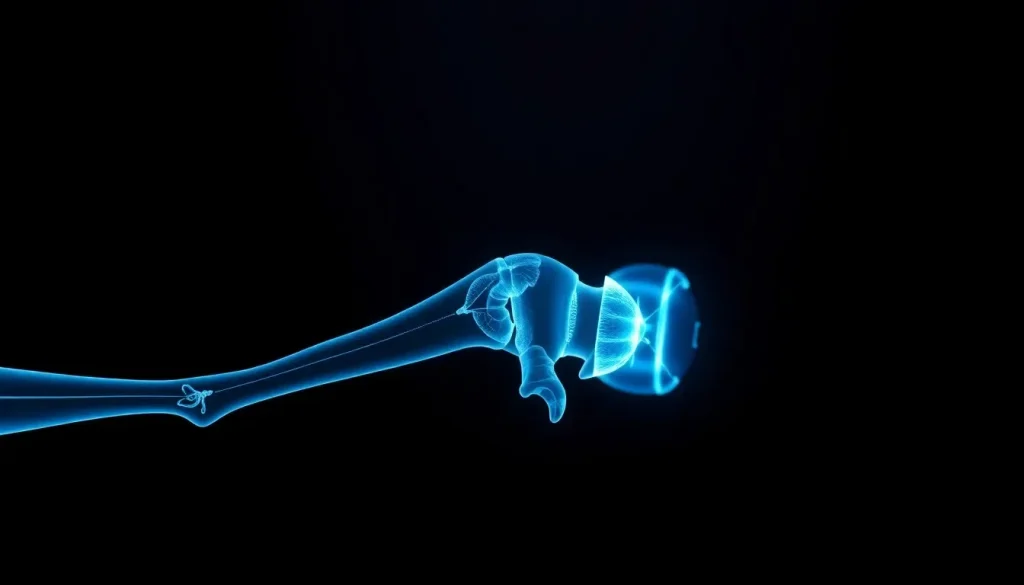Scientists aim to heal complex bone fractures with innovative gun

Imagine a future where complex bone fractures can be treated with a precision tool that accelerates healing, minimizing recovery time and complications. Researchers are currently exploring innovative methods to revolutionize bone healing through advanced technologies. One such development is a novel "bone-healing gun" that aims to address the challenges associated with severe fractures. Let’s delve into the fascinating details of this groundbreaking research and its potential implications for medical treatment.
- Understanding the bone-healing gun
- The testing process and initial results
- Challenges in the development of the healing gun
- Evaluating the effectiveness on larger animal models
- Skill requirements and precision in application
- Future perspectives on bone healing technology
- Complications and considerations in bone fracture healing
- Consolidation phases of bone healing
- Enhancing the healing process for fractures
Understanding the bone-healing gun
The concept of a bone-healing gun involves the use of a biocompatible material that aids in the regeneration of bone tissue. The research team, led by Lee, has identified a combination of polycaprolactone and hydroxyapatite as the core components of this innovative treatment. Polycaprolactone is an FDA-approved thermoplastic that degrades naturally in the body within a few months, while hydroxyapatite is crucial for supporting bone tissue regeneration.
Through extensive experimentation, the team has refined the formulation to ensure that it can be extruded at a safe temperature of around 60 degrees Celsius. This careful balance allows for a product that not only adheres well to existing bone but also maintains mechanical stability as it gradually degrades, facilitating the body’s natural healing processes.
The testing process and initial results
The promising results of the bone-healing gun were first observed in trials conducted on rabbits. These trials involved treating rabbits with femoral fractures. The results indicated that those treated with the bone-healing gun exhibited faster recovery rates compared to those treated with traditional bone cement, which is currently the most common alternative.
Despite these encouraging findings, further research is critical before this technology can be applied to human patients. The next steps involve a more comprehensive evaluation of the long-term efficacy and safety of the treatment.
Challenges in the development of the healing gun
While the initial experiments show promise, several challenges remain in the development of the bone-healing gun. One significant issue is the gradual degradation of the implanted material, which can hinder the complete restoration of bone tissues. To tackle this, Lee plans to enhance the formulation by incorporating antibiotics that can be gradually released to help prevent infections during the healing process.
- The potential for improved bone tissue restoration
- The introduction of antibiotics to combat infections
- Assessment of load-bearing capacity in heavier animals
Evaluating the effectiveness on larger animal models
While rabbits provide a useful model for initial testing, there is an urgent need to evaluate the bone-healing gun in larger animal models. This will help to better understand how the treatment performs under conditions that more closely resemble human physiology and load-bearing situations. Lee emphasizes the necessity of this phase to ensure the technology is safe and effective for human use.
Skill requirements and precision in application
Another interesting aspect of the bone-healing gun is the level of skill required to operate it effectively. Unlike traditional extrusion-based 3D printers, which use guiding rods or rails for precision, the handheld nature of the healing gun introduces challenges in achieving the same level of accuracy. This could pose difficulties even for skilled surgeons.
Lee acknowledges this concern, stating that the system will indeed require practice to master. To enhance precision, there is a proposal to integrate a guiding mechanism that could facilitate accurate positioning of the device, making it a more viable option for surgical applications.
Future perspectives on bone healing technology
The implications of this research extend beyond just the bone-healing gun itself. It points towards a broader trend in medicine where technology and biology converge to improve patient outcomes. As advancements continue, we can expect to see:
- Enhanced healing processes through biocompatible materials
- Reduction in recovery times and complications from fractures
- Innovative applications of similar technologies in other areas of medicine
For those interested in learning more about these advancements, a related video titled "British Researchers Say They Found New Way To Heal..." offers an insightful look into innovative techniques for bone healing. Check it out below:
Complications and considerations in bone fracture healing
Despite the potential benefits, complications can arise during the healing process. Understanding these complications is crucial for developing more effective treatments. Some of the common issues include:
- Infection at the fracture site
- Poor alignment of fractured bones
- Delayed healing due to insufficient blood supply
Addressing these concerns will require ongoing research and advancements in techniques and materials used in treatments.
Consolidation phases of bone healing
Bone healing is a complex process that occurs in several phases:
- Inflammation: Immediate response to injury, characterized by swelling and pain.
- Soft callus formation: New tissue begins to develop around the fracture.
- Hard callus formation: Bone begins to harden, providing more stability.
- Bone remodeling: The bone continues to strengthen and reshape over time.
Each phase plays a critical role in ensuring that the bone heals properly and regains its full function.
Enhancing the healing process for fractures
In addition to innovative technologies like the bone-healing gun, there are various strategies that can enhance the healing process:
- Proper nutrition, including adequate calcium and vitamin D intake
- Physical therapy to improve mobility and strengthen muscles around the fracture
- Avoiding smoking and excessive alcohol consumption, which can impair healing
By combining these strategies with advancements in medical technology, patients may benefit from improved recovery outcomes.




Leave a Reply